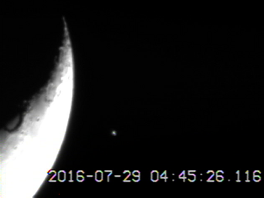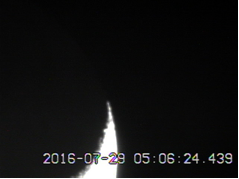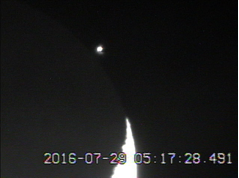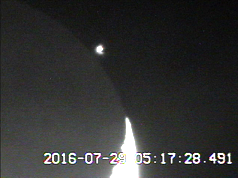
Lunar Grazing of Aldeberan
The IOTA is an association of amateur astronomers dedicated to determining the locations, size and spatial relation of solar system bodies. In particular, observation of occultations of lunar surfaces is important to the precise determination of the positions of the major massive objects in our system, the earth, the sun, and the moon.
On July 29 the bright star Aldeberan grazed the surface of the waning moon. 17 observing stations were deployed for this observation in association with the 2016 meeting of the IOTA, which was hosted by the Department of Physics at Oklahoma State University.

Images from Grazing
The following collection of images were pulled from the video taken by the Oklahoma State observing team during the grazing. The image includes the date and time stamp (Local Time). The top of the pictures represent West and the bottom of the picture represents East. The bright star is Aldeberan. If one looks closely, in some of the pictures you can see the dark side of the moon through Earthshine, light from the sun reflected by the Earth to the moon and then reflected back to Earth by the moon.





